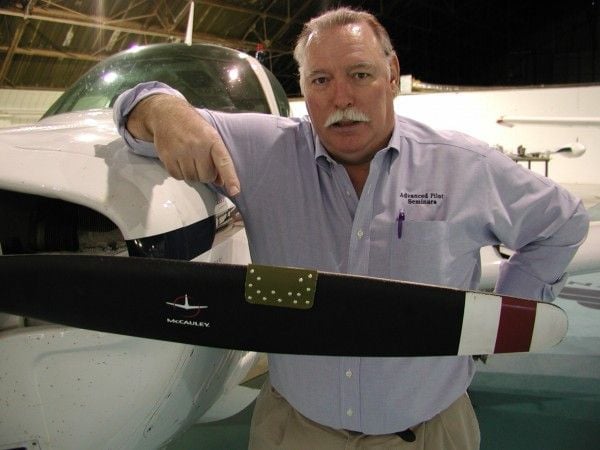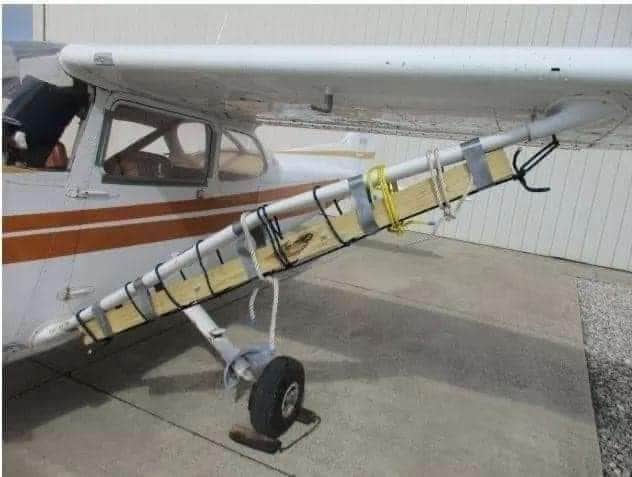Knotty Problem
Aside from the extra parasitic drag and the fact that the wing is hanging lower, it would probably be airworthy.
I have the STC for this prop-blade repair:


I'm guessing someone tried either to lift the aircraft from the bottom, or pushed hard the wingtips down.. Third option someone reversed the car.. In any case I don't know why people think the wing strut is unbreakable/unbendable.
Think about this picture next time when you step on to check the fuel..
Think about this picture next time when you step on to check the fuel..
I'm guessing someone tried either to lift the aircraft from the bottom, or pushed hard the wingtips down.. Third option someone reversed the car.. In any case I don't know why people think the wing strut is unbreakable/unbendable.
Think about this picture next time when you step on to check the fuel..
Think about this picture next time when you step on to check the fuel..
Fast forward 40 years later, we are heavier, the aircrafts too are getting older, everything has an "best before" date including steel wing struts..
I wonder why those steps are not installed on some other high wing aircrafts ?
I have often wondered why there is not a 'Weight limit' stencilled on said strut....or on that 'little tab step' on the fuselage, or in POH ??
(aircrafts? )
(aircrafts? )
Yep, and they were designed 40 years ago when the weight of an average American was around 70kg.
Fast forward 40 years later, we are heavier, the aircrafts too are getting older, everything has an "best before" date including steel wing struts..
I wonder why those steps are not installed on some other high wing aircrafts ?
Fast forward 40 years later, we are heavier, the aircrafts too are getting older, everything has an "best before" date including steel wing struts..
I wonder why those steps are not installed on some other high wing aircrafts ?
Considering the inflight loads I'd much rather step on this and bend it than get it in the air and find out. Yes the loads on it aren't the same things but if you stepping on it bends it then you were already in trouble and either that aircraft needs to go or you need to hit the gym :P
I get that and the idea that stepping on that step a few times a day for a couple of decades accumulates as well but I'd dare say it's a small percentage of the overall degradation that occurs from inflight stresses.
For the full story of what actually happened look up NTSB investigation docket CEN20CA112.. In essence,, bounced on landing, entered soft surface,nose gear collapse and a/c overturned. Simples....
Yep, and they were designed 40 years ago when the weight of an average American was around 70kg.
Fast forward 40 years later, we are heavier, the aircrafts too are getting older, everything has an "best before" date including steel wing struts..
I wonder why those steps are not installed on some other high wing aircrafts ?
Fast forward 40 years later, we are heavier, the aircrafts too are getting older, everything has an "best before" date including steel wing struts..
I wonder why those steps are not installed on some other high wing aircrafts ?
Some airports I’ve been to had itty bitty ladders that made it easy to get over the top of the wing and check the level of fuel.
As to passengers getting heavier…
Minimal fuel load within limits, dump any extraneous material from your flight bag, make sure you have plenty of runway. Always remember weight and balance.
Way back when airlines had scales that they had the luggage AND PASSENGERS step onto so that they knew what they were carrying.
As to passengers getting heavier…
Minimal fuel load within limits, dump any extraneous material from your flight bag, make sure you have plenty of runway. Always remember weight and balance.
Way back when airlines had scales that they had the luggage AND PASSENGERS step onto so that they knew what they were carrying.




